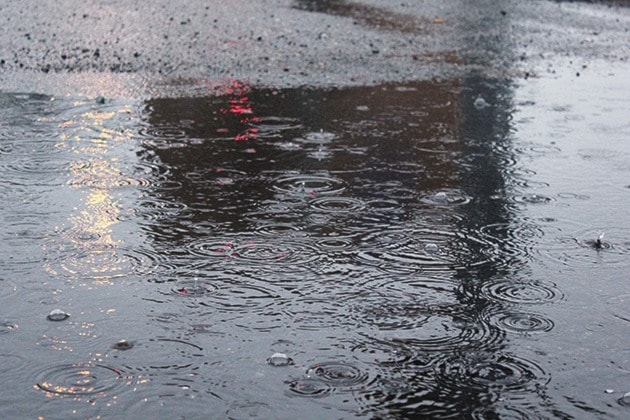In case you haven't noticed, it's really wet out there.
During a downpour like we've had this week, no one should have to sleep outside.
That's why Chilliwack has an Extreme Weather Community Plan.
Our local shelters, The Salvation Army, Cyrus Centre Chilliwack, and Ruth and Naomi's Mission came together in 2014 to create the collaborative plan.
Representatives from each agency agreed upon the unified plan which was then submitted to B.C. Housing.
As stated on the B.C. Housing website, "The provincially funded Extreme Weather Response (EWR) program provides individuals and families in need with access to a warm, dry place to sleep during extreme weather conditions between November 1st and March 31st."
"We didn't reinvent the wheel," said Les Talvio, Executive Director of Cyrus Centre Chilliwack. "We put together a plan that mirrored those in other communities."
Essentially, the community plan equips each agency with extra beds and resources for those who are homeless or at risk of being homeless, to be utilized during extreme weather conditions.
 Thirty-three additional extreme weather beds are now available in Chilliwack. There are 12 for youth at the Cyrus Centre, five adult beds at Salvation Army, and 16 at Ruth and Naomi's for overflow.
Thirty-three additional extreme weather beds are now available in Chilliwack. There are 12 for youth at the Cyrus Centre, five adult beds at Salvation Army, and 16 at Ruth and Naomi's for overflow.
Approved by B.C. Housing, the plan ensures that these agencies will receive provincial funding to cover the costs incurred during periods of extreme weather.
A staff member at the Salvation Army has been designated as Chilliwack's community coordinator. If the weather forecast predicts temperatures of zero degrees or below, or sustained, substantial precipitation, the coordinator declares the extreme weather alert, and notifies all local agencies that the plan is active.
B.C. Housing will reimburse the agencies a per-client fee for the cost of additional staffing, beds and linens, meals, and toiletries accrued during the extreme weather period.
The extreme weather alert was made on Wednesday due to the precipitation forecast, which called for more than 40 mm of rain.
"In that kind of torrential downpour, people get soaked and they just can't get dry," said Tim Bohr, Community Ministries Director of the Chilliwack Salvation Army. "It's a genuine health and safety risk that justifies opening additional beds."
The alert stays in place "until the weather improves to the point where in no longer represents a a safety risk," Bohr continued.
For example, when a Chilliwack alert was put in place on Dec. 23 for freezing temperatures, it wasn't lifted until Jan. 10.
As of Thursday morning, Chilliwack had received 48 mm of rain in the prior 24-hour period, according to Roger Pannett, volunteer weather observer for Environment Canada.
The heavy rain posed a heightened risk in many communities this week. Similar alerts opened additional housing in Victoria, Abbotsford, Richmond, Squamish, Duncan, and Salt Spring Island, to name a few.
There is no official notification system in place for Chilliwack's extreme weather alert, aside from a tweet from B.C. housing. Bohr says that there is no need for one.
"When the weather is like that, people will show up anyways."
Interestingly, despite the the heavy rain, Chilliwack is experiencing record high temperatures.
Pannett's report indicated that the highest temperature on Jan. 28 reached 14.2 degrees Celsius, beating the previous record of 13.9 degrees in 1952.
The minimum temperature reached 8.0 degrees on Jan. 28, 1.7 degrees warmer than the previous record of the 6.3 degree minimum in 1992.
The warm, wet weather caused some traffic trouble in the eastern Valley as well. Highway 1 eastbound was closed for part of Thursday morning near Flood Hope Road due to a rock slide.
